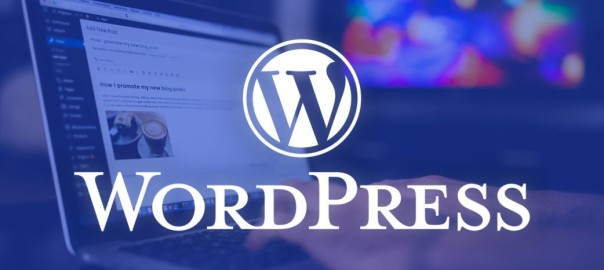Some designers are hesitant to use WordPress. They say WordPress limits creativity, is not as easy to figure out as some people think, and can be confusing for many clients.
They say it’s difficult to convert a modern design into a feasible theme.
This is partially true.
WordPress is the go-to platform for those working with clients but it is far from perfect. That’s why, if your goal is to impress your clients, we need to adopt a new approach.
Various elements and processes make some WordPress builds way simpler, and more effective than the others, as putting a WordPress site together is not that difficult once you understand the working processes.
So here we list the approaches you can take to build a great WordPress site in a way that will impress your clients.
1) Brainstorm
Note. Don’t ever copy the results of anyone’s work such as code, graphics, brand identity or names but get inspired by it.
Again, this is about gaining ideas only. Let me say that taking ideas is the most common design practice off all, so do your research, surf the web and get inspired.
The fact is that an idea is nothing without execution, that’s what matters. You can easily have half a dozen designers start with the same idea, and they will inevitably end up with twelve different results.
Don’t be afraid to copy and enhance. If you see something that hits home to you, take it and make it your own.
2) Build the foundation
It is important to condition your clients to care more about the results the website brings rather than how pretty it looks.
Always make sure that you understand what the client wants to achieve with their site and subsequently focus on money generation.
Once you understand what you need to achieve, which you should try to narrow down to one or two primary objectives, then you can build the whole website around it.
Most clients will be looking for lead generation, selling products, and seek to improve brand awareness.
3) Equip yourself with the right tools
I am going to leave the very basic tools out like Dropbox, Google Drive, and Photoshop. I would rather show you a different set of tools that are not that well known yet, but they still deliver the results and make a WordPress designer’s life easier.
Let’s start with these:
Unsplash
Provides a premium source of high-quality photos with no copyright; meaning they are suitable for commercial use.
PixelDropr
A convenient way to create your pixel collections with buttons, icons, UI kits for example and then use them in Photoshop through drag and drop.
IcoMoon
Is one of the better icon font providers available in today’s market, you also get an app you can use for building your custom fonts.
4) Design and modify along the way
Commonly there are two main ways of building a WordPress site: You can roll with a ready-made theme and modify it as you go along (you can also modify the PSD files) or you can build the structure from the ground up, this is not as complicated as it sounds.
To keep this simple, I am a big fan of the former. When you take an existing theme or a theme framework, then you get a lot of functionality straight off the bat. And this functionality has been tested and proven to be effective for your client. On top of that you will often get support, and even if you don’t, you can engage in a forum of some kind. There is always someone you can ask for help, but this is not the case when you are building your design from scratch.
Themeisle
This is very handy for a designer, a new player in the market. They work alongside you to help create a theme to improve conversion rates and lead building for your client, the theme is just a part of the process, but this will get you off to a good start.
Here I’d like to list some free alternatives that are still good as a starting point:
The themes at http://wordpress.org/themes/ – this is the official directory. The themes there are generally safe and analysed for common security problems.
Underscores
This is a starter theme with not much design on it, only a solid structure. It requires more work to turn it into a finished site though.
5) Get Some Non-Obvious Plugins
My primary goal in this article is to give you a starting and finishing point of building a site quickly and in a way that clients will love the functionality and results from it.
Again, I am going to brush over the obvious plugins you already know of, like WordPress SEO or Contact Form 7 for example. Instead, I am going to focus on less obvious ones, yet still extremely important for your clients.
User Admin Simplifier
If you’re dealing with someone that is not that web-savvy, it’s highly unlikely that they are interested in (or even should be) seeing the whole WP admin panel.
WordPress Backup to Dropbox
This keeps the site safe in case the server crashes or any other unforeseen event occurs.
Tweet Old Post
These days, less and less people have the time to tweet their posts out manually on a daily basis. A plugin does this for you, or for your clients, meaning one less thing on their daily to-do-list.
Advanced Custom Fields
The plugin allows you to customise the user interface even further, and give your clients some extra types of content and further elements for them to use in their posts. This is not a one-click wonder plugin though as it does require work.
6) Create and Market Your Content
If it’s your site that you’re building then this step will be apparent, on the other side of the coin, for a client, you should still step in and offer your help with creating the initial content and maybe approach them with an after sales service and continue with a new deal.
A common mistake among designers is leaving the client behind after they have paid you for the site. And this overlooked point can have a significant impact on your future earnings.
Make sure your client does not fail due to them being unable to figure out what and how to publish, then they are very unlikely to come back or refer your services.
7) Time to Get Moving
Taking into consideration the steps covered above. I would say the last one has the most impact on your client’s happiness levels in the long run. In reality, even if you make a mistake on the site, but stay proactive and in contact to do everything you can do to fix it, providing tips and advice, then the client will come back as you now have a bond that comes from trust and understanding.
About the Author
Lancey Clemons is an experienced digital marketer and content curation specialists. He currently works with an SEO company in Canberra. In his free time, he likes to read thriller novels or write in his journal.

